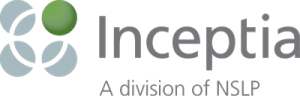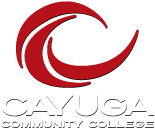REPAYING YOUR STUDENT LOANS
For each federal student loan you received, your school or loan servicer provided you with information (often by e-mail) about it, including the amount you borrowed and the interest rate. It’s a good idea to use this information to track your borrowing and to prepare for repayment of your loan. You also have the option to view your federal student loan information using “My Federal Student Aid” at https://studentaid.gov/.
CONSEQUENCES OF DEFAULT
Default generally occurs on a federal student loan when a borrower fails to make a payment for 270 days. During the delinquency period, the lender makes repeated efforts to locate and contact the borrower about repayment. If the lender is unsuccessful, steps will be taken to place the loan in default. Borrowers should avoid default at all costs because, unlike other consumer loans, student loans usually can’t be discharged through bankruptcy and will likely stay with borrowers for the rest of their lives.
A borrower with a defaulted loan faces these consequences:
- Payment of entire loan balance (principal and interest) becomes due immediately
- Garnished wages and federal and/or state tax refunds
- Withheld Social Security retirement benefits and disability benefits
- Additional charges, late fees, and collection costs
- Lawsuits
- Ineligibility for additional student aid
- Damaged credit rating and lower credit score (which could prevent obtaining a mortgage, buying a car, or borrowing other consumer loans in the future)
- Loss of eligibility for loan deferments (such as for in-school, unemployment, etc.)
TIPS FOR STRUGGLING BORROWERS
Even if borrowers and schools do everything right to prevent default, unforeseen circumstances can sometimes make it difficult for borrowers to repay their federal loans. Borrowers who have difficulty making loan payments should contact the lender as soon as possible to explore options, including:
-
Exit Counseling Guide for borrowers of Direct Loans and Federal Family Education Program loans
This guide provides an overview of the information you will need to successfully repay the federal student loan(s) that you’ve received to help pay for your college costs under the William D. Ford Federal Direct Loan (Direct Loan) Program and the Federal Family Education Loan (FFEL) Program. - Alternative repayment plans to lower monthly payments (these can sometimes drive up the total cost of the loan)
- Loan forgiveness and discharge programs that can cancel loan obligations
- Deferments and forbearances to temporarily suspend monthly loan payments
FREE ASSISTANCE ON YOUR FEDERAL STUDENT LOAN OBLIGATIONS

You’re not alone when it comes to student loans. Cayuga Community College has partnered with
Inceptia, a division of National Student Loan Program (NSLP), to provide you with
FREE assistance on your Federal student loan obligations to ensure successful, and comfortable, loan repayment.
Inceptia may be calling to help you with next steps in your repayment journey. Their friendly counselors are there to help you every step of the way. While you are in your grace period, they might reach out to you to answer questions you may have about your repayment options. If you become delinquent on your loans, they may also contact you to help find a solution that works within your means.
The Inceptia counselors are there to help you with every step by staying in touch with you via phone calls, letters, and emails. They are not a collection agency. Inceptia’s non-profit purpose is to help you find answers to your questions and solutions to your issues.
We encourage you to visit Inceptia’s Student Loan Knowledge HQ website at HeroKnowl.org.
TIPS FOR DEFAULTED BORROWERS
Borrowers with a defaulted loan can regain eligibility for Federal student aid by contacting the loan holder, making satisfactory repayment arrangements and making at least six voluntary on-time payments for six consecutive months. Satisfactory repayment arrangements are a step in the right direction, but do not clear the loan’s default status.
Borrowers with a defaulted loan can rehabilitate their loan to bring the loan out of default, eliminate the default from their credit report, and regain eligibility for additional student aid. To rehabilitate a loan, borrowers should contact their loan holder and begin making payments on the loan. Borrowers who make 9 full voluntary payments within 20 days of the monthly due dates within 10 consecutive months qualify to have the loan rehabilitated.
Borrowers may also negotiate a settlement with the collection agency. This could reduce what the borrower owes, but it won’t likely be a huge discount and it won’t clear the default status. When settling, lenders may waive collection charges and reduce the total amount owed. Borrowers who have been in default for many years and lack the resources to repay the loan are more likely to negotiate a settlement.
RESOURCES FOR BORROWERS
Borrowers who experience problems or disputes with their federal student loan lenders or repayment servicers have several resources available to assist them, including:
- The U.S. Department of Education’s Federal Student Aid Ombudsman (1-877-557-2575 — fsaombudsmanoffice@ed.gov)
- The Student Loan Borrower Assistance Project run by the National Consumer Law Center
